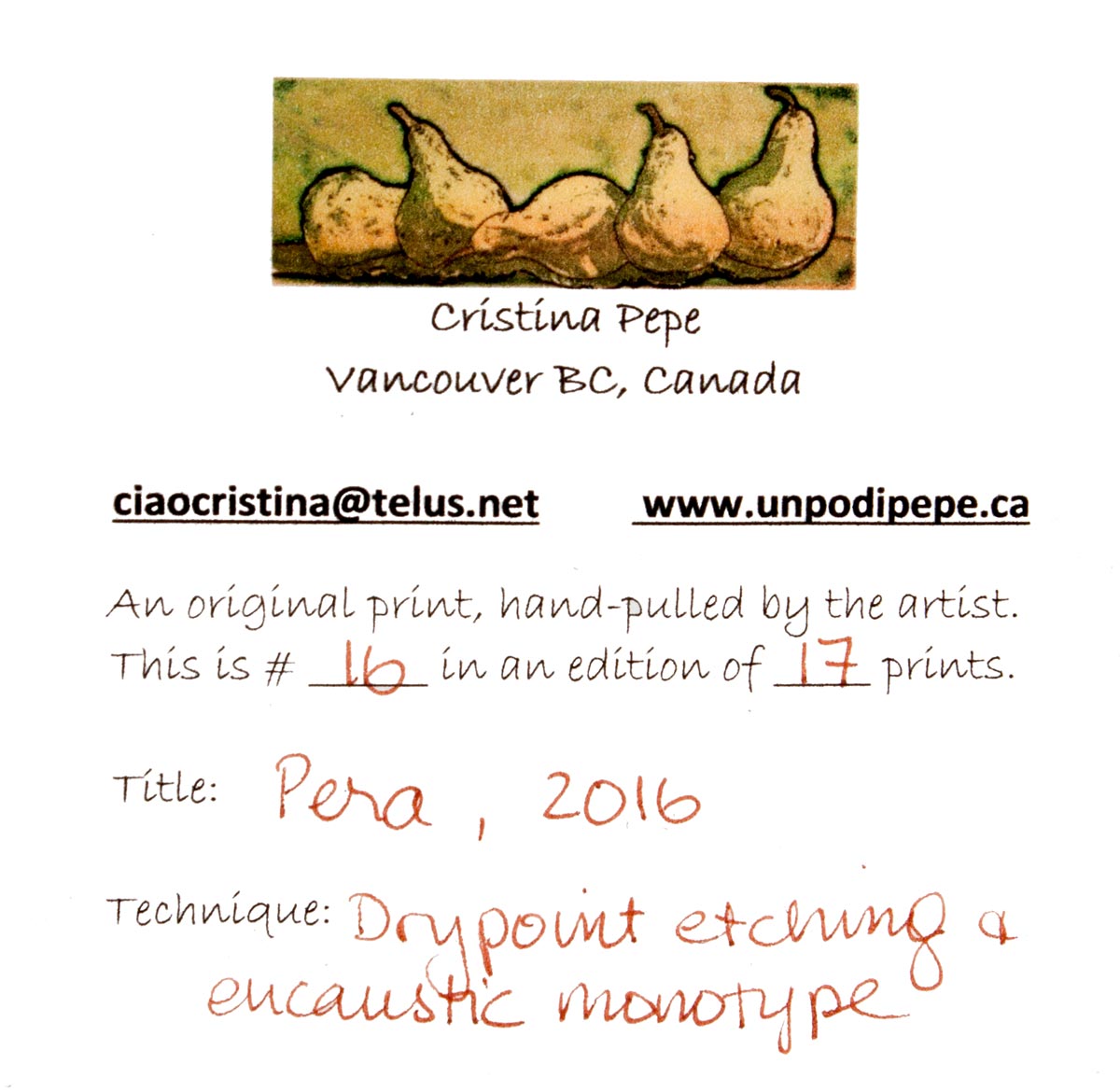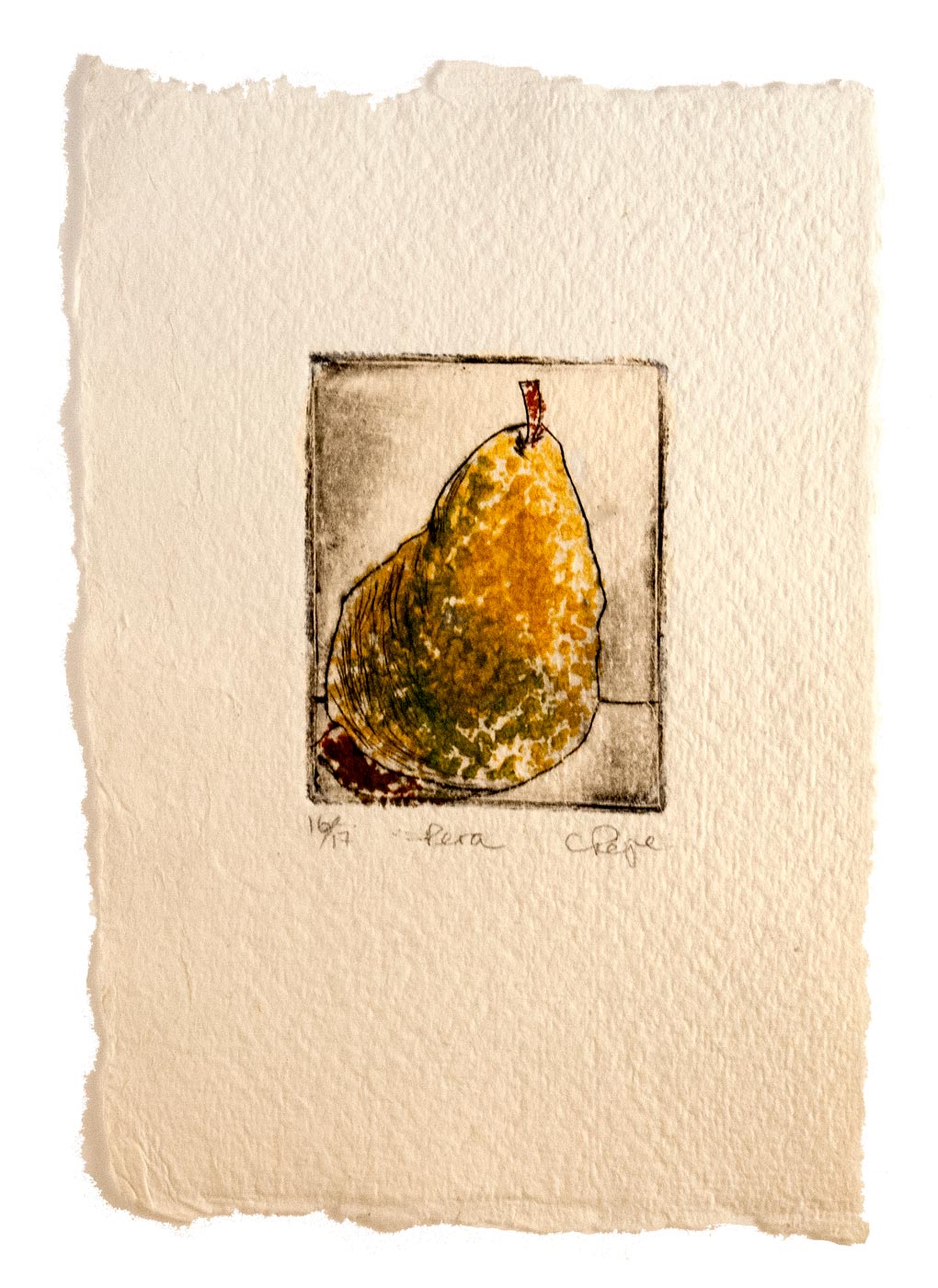Photographers should hang around artists. I’ve talked before here about the benefits for a photographer of going to art galleries and shows. If you are thinking about your craft seriously these events will get your mind churning. I am not talking about photo exhibitions. That becomes intellectually incestuous. No, I am talking about getting out amongst other graphic artists to see how people in other mediums represent the world we all share.
Take last Friday night for instance. Here in Vancouver we have a very active Italian Cultural Center and in the summer they hold a series of Italian Markets in the parking lot of the Center. Last Friday was the first market for this year. Susan and I were walking through the stalls looking at the wines, breads, flowers and crafts on display when I cam upon Cristina Pepe’s booth where she had some of her hand made prints for sale.
A small print of a pear caught my eye and I picked it up. 4.25 inches wide by 6 high on a deckled piece of water color paper it was a jewel. I have written about this before: a fine piece of art is a pleasure to hold even before you consider the image. The object itself must project an impression. Cristina’s print was such an object.
I have often complained that modern cameras suffer from being too sharp, to good at capturing detail. You end up with so much information that the underlying emotion of the print is lost in the intellectual digesting of the image. So what of this small wonder?
Immediately I was drawn to the piece itself, the physical object and not so much the image. The paper was heavily textured. It was firm almost like a piece of cardboard. And the edges were rough and uneven as you find in hand laid papers. I liked to look of it, it felt good in the hand just to hold it, and the surface of the paper was three dimensional.
Once I had gotten past that initial pleasure of simply holding it the image spoke. There was not enough detail to give me a complete pear. The color palette was restricted which concentrated attention on the forms in the picture. But there was enough that it called to one’s memory of pears and invited you to fill in the details yourself. The funny thing is that when you do that you fill in not just the image but smells and tastes as well. In a way, you end up with a more realistic impression than if you had a detailed photograph.
On the back of the print was the following on a small piece of paper:

I had to look up the term “Encaustic”. As usual Wikipedia came to the rescue:
“Encaustic painting, also known as hot wax painting, involves using heated beeswax to which colored pigments are added. The liquid or paste is then applied to a surface—usually prepared wood, though canvas and other materials are often used.”
This was a new one to me. You see how much we have to learn from the other arts? Now to photography.
I had several thoughts that arose out of this encounter. I have been making large prints on canvas and watercolor paper. And yet here was a very small print, literally a few inches on a side, that was having an impact. So point number one: have a look at doing some very small prints.
Then there is the simplicity of this piece. I have several ideas along that line. They involve simplifying the pictures, maybe removing detail, and they certainly involve non-traditional mounting media.
My point here is that this chance encounter with another person pursuing her art has stirred creativity within me. I saw and learned from another medium things that I may be able to apply to my photography.
And finally, Cristina was very willing to explain what she had done, how it was accomplished, what she sought to do. I love that kind of openness because that way knowledge passes and spreads and that has to be good. In the same vein, I will tell you about what flows from these thoughts as I pursue them.



